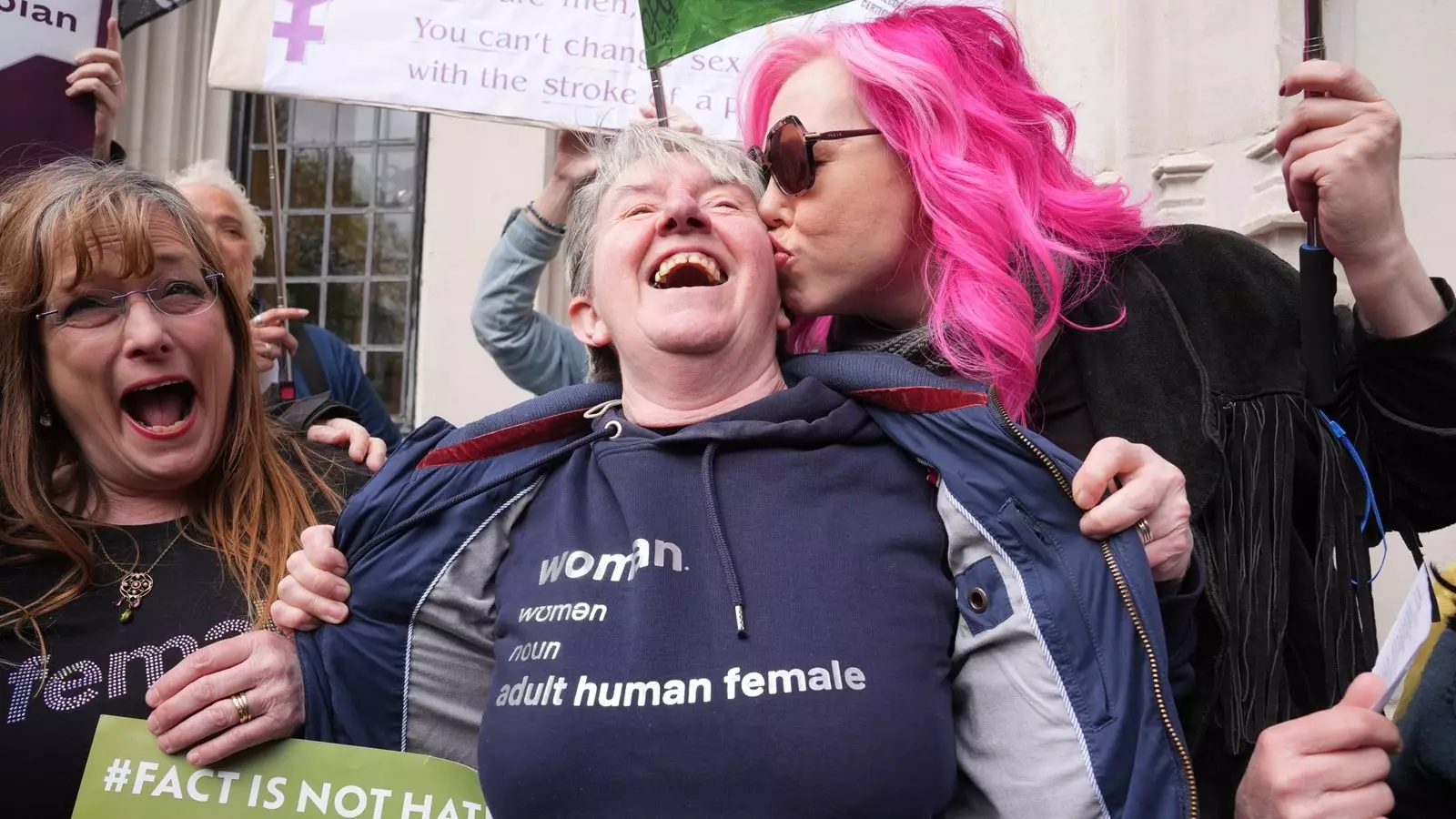The recent legal decision made by five judges in England’s highest civil court has ignited an unparalleled eruption of emotions surrounding the ongoing discourse about gender and sex. After years of rising tension and fervent disagreement, the court’s pronouncement leaves no room for ambiguity: a woman, legally, is defined by her biological sex. The implications of this ruling extend far beyond the courtrooms and into the lives of millions, particularly those who identify as transgender, shedding light on an undeniable rift in societal understanding and acceptance.
For years, the debate has often felt like a battle of wills between entrenched ideologies. The legal nuances surrounding the Equality Act 2010 and the Gender Recognition Act 2004—pieces of legislature once thought to be progressive—have become swords in a contentious war. These laws initially aimed to protect and empower trans individuals were put under scrutiny as interpretations diverged on whether a gender recognition certificate (GRC) could genuinely alter one’s sex for all legal purposes. The court’s resolution has not only reaffirmed the status quo but has also stirred a cauldron of fear and frustration among trans activists who see their identities called into question.
A Divided Society
As society grapples with this ruling, it becomes clear that we are confronted not just with a legal definition, but with a cultural clash that defines our times. Activist groups like For Women Scotland celebrated this day as one of victory, but the tears of trans individuals echo a somber reality: joy for some is anguish for others. The judge’s verdict regarding women-only spaces stirs debates about safety, identity, and inclusivity. Are we truly prepared to draw such stark lines around gender in a world where the fluidity of identity is gaining recognition? This ruling challenges the fundamental idea of what it means to belong and who gets to decide the parameters of identity.
The reactions to the ruling illuminate the sharply divided opinions that characterize this discourse. While some argue that the decision fortifies women’s rights, others see it as an intolerable affront to the rights of trans individuals. The expression of disappointment from trans leaders underscores a critical question: can we thrive in a society that fails to recognize the validity of all its members? This court ruling does not merely delineate legal definitions; it creates existential dilemmas that ripple through the lives of those affected.
The Political Ramifications
The political fallout from this ruling cannot be overstated. With looming elections, Scotland’s First Minister John Swinney has distanced himself from the unpopular gender politics of his predecessor. It raises a worrisome concern: is political expedience now dictating the narrative surrounding human rights? The SNP’s hasty attempts to navigate this treacherous terrain signal a retreat from expanding liberties for trans individuals. As the specter of upcoming elections looms, concerns that this ruling will bury any hope for advancing gender equality reform loom large. Will we allow fearless political calculations to undermine the rights of a marginalized community?
The juxtaposition of contrasting responses, from the jubilant tears of some to the heart-wrenching dismay of others, reveals the shortcomings of our legal system—a system that should offer justice and solace fails to embody those ideals. Such a glaring polarization begs critical evaluation of what progressive political action looks like in today’s complex socio-legal landscape. Can we genuinely foster a society that is equitable for all, particularly when entrenched biases continue to inform much of the discourse?
The Human Cost of Legal Definitions
In human terms, the implications of this ruling resonate loud and clear, directly impacting the identities and rights of individuals. Women who have fought tirelessly for their rights and trans individuals navigating a path of acceptance exist within this cocoon of legal and societal turmoil. The disconnect between lived experiences and legal definitions reveals a troubling trend: language and legislation are insufficient to encompass the variance and vibrancy of human identity.
The ruling is not merely an abstract legal decision; it is a palpable attack on the self-identity of trans individuals. A woman who identifies as trans should not find her existence relegated to a legal footnote, nor should she find herself caught in a discourse that dilutes her experiences into categories of ‘correct’ and ‘incorrect.’ This intersection of law and identity presents an unsettling paradox, demanding urgent and sincere discussion.
As we continue to dissect the implications of this judgment, we must confront the reality that human identity is not as easily contained as legal definitions may suggest. It is incumbent upon us, as a society, to strive for inclusion and empathy, challenging the rigid frameworks that prevent many from living authentically and freely.


Leave a Reply